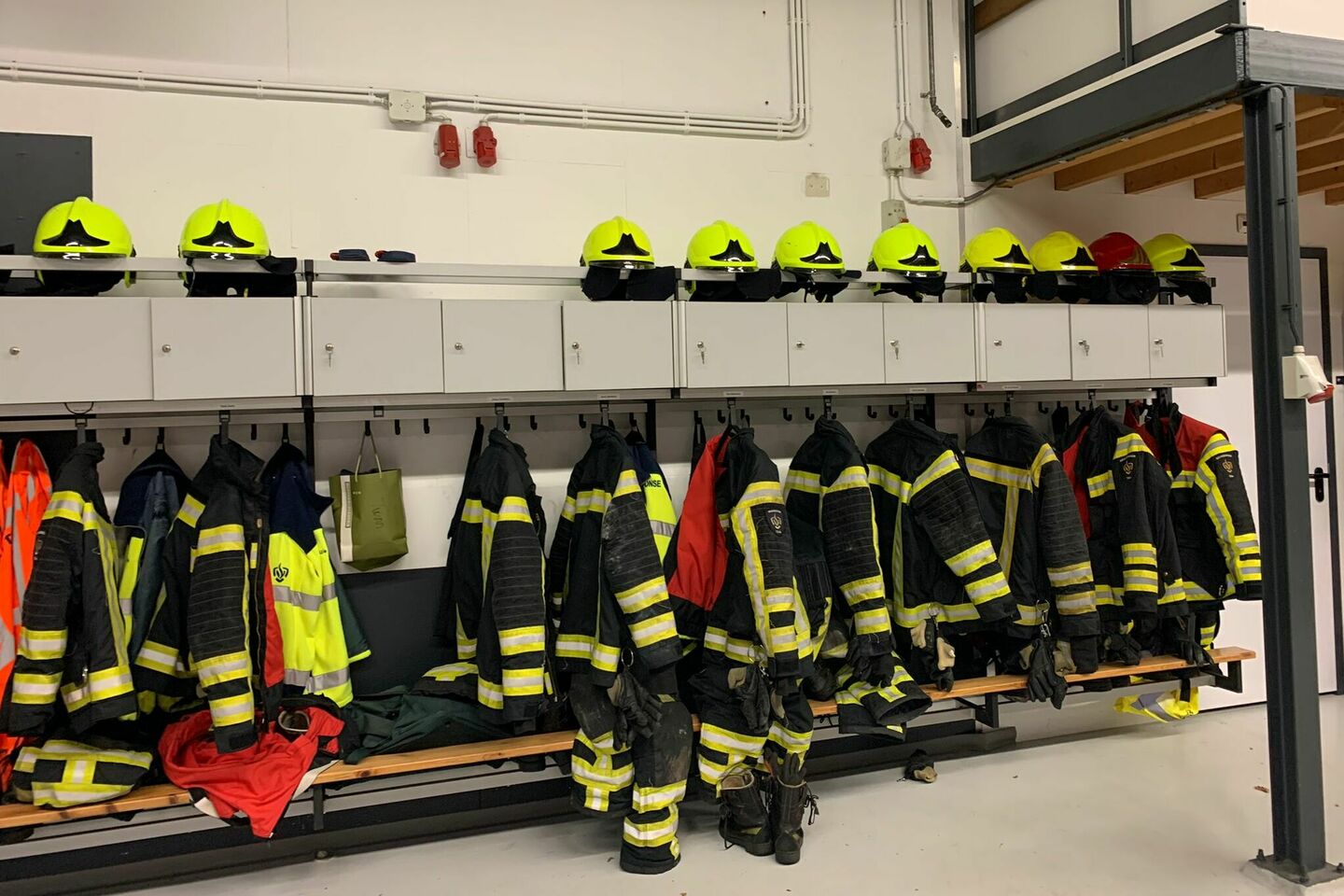
Tagging along with the TU/e fire department with a smile and a tear
From reading toddlers in a fireman's suit to cutting open cars
Cursor tagged along with TU/e’s fire department for a day. Many people don’t realize what takes place behind the scenes. “There’s a lot of humor in our team, but we all become dead serious in a heartbeat once the alarm goes off,” acting deputy chief Tim Schippers says. And that alarm can go off at any moment, even when you’re on the toilet.
Together, fire chief Eric van der Heijden, acting chief Tim Schippers and firefighter Jan van Schijndel form the triumvirate of TU/e’s fire department. But they certainly don’t have to carry out the job by themselves; they have the support of fourteen volunteers who work on the campus in a different capacity, such as Luciano Oorthuizen, Education and Research Technician at the Equipment & Prototype Center, and Janneke Zeebregts, Education and Research Technician at the department of Applied Physics.
The editor’s alarm clock goes off at 6 a.m. Schippers wakes up even earlier than that, because he wants to do a workout at the fire station before his workday starts at 7:30 a.m. A firefighter obviously needs to be in good physical shape, which is why a daily workout is essential. After a quick shower, he joins the team at the office. The brewing coffee is their holy grail. “An important fire department ritual,” Van Schijndel explains. “We don’t have that many moments during the day to sit down together, and this is a good way to start the day.”
After we finish our coffee, we quickly jump into the car: Van Schijndel brings Cursor along to a visit of the buildings on the campus where construction activities are being carried out. The automatic smoke detectors need to be turned off temporarily in the morning, so that they won’t go off when dust is released. In the afternoon, we go on the same round to turn the detectors back on. “We are highly selective in turning off these alarms because of safety: we only turn off the detectors momentarily at departments where actual construction work takes place,” Van Schijndel says.
Sliding down the pole
The life of a firefighter brings a different kind of tension than most other professions. Van Schijndel: “That’s certainly true when I’m on call for the voluntary fire brigade, where I work alongside my day job at TU/e. When the alarm sounds, I need to be at the station within four minutes. I’ve sometimes found myself in a situation where I was standing in line at the supermarket with a full shopping cart. Or when I was just about to take a bath. You get used to it, but it’s not always that convenient.” Schippers identifies with him. “Or you happen to be on the toilet, not very practical either.”
Cursor notices that one classic feature is missing at TU/e’s fire station: the pole. The team is located at the upper floor, but they take a simple staircase to get to the ground floor. Perhaps it would look better on the photo, but Schippers doesn’t really mind. “Before I came to TU/e, I worked at Eindhoven center, where they do have a pole. I can tell you, if you’re still a bit wet after you get out of the shower and the alarm goes off, sliding down a pole is no fun. I’ve had some tricky moments sliding down that pole, almost getting stuck on it.” The men feel the sense of urgency in their blood, it’s an immediate response triggered by the alarm. “I once saw a colleague come running in still wearing a barber cape,” Schippers remembers. “And I myself once arrived at the fire station with a half-shaven face,” Van Schijndel adds. It’s clear that these men take their work very seriously.
Evacuation drill
8:30 a.m., time for the preparations for an evacuation drill in Differ. Those who think that firefighters mostly spend their time solving crossword puzzles as they wait for the alarm to go off, are wrong. Fire fighters conduct various drills and carry out preparations for events. In addition, providing voluntary firefighters with refresher courses is also part of their job. This Thursday, it’s Differ’s turn to host an annual mandatory evacuation drill. A report has come in of a simulated fire. First, that day’s Emergency Response Team leader needs to indicate the number of first responders on call and task them with duties. Some need to locate where the report came from, assess the situation, and determine whether they can put the fire out by themselves in a responsible way. Other first responders need to tend to victims or to people with mobility problems. One of those people during today’s drill is Cursor’s editor, who sits in a wheelchair waiting for help. An experience that’s not easy to be confronted with: waiting for someone to come and help you as everyone around you evacuates the building in great haste. And even though this is only an exercise, the editor’s palms start to feel a bit sweaty, especially when the Evac Chair – a special wheelchair designed for emergency situations – is nowhere to be found. The things that need more practice are discussed during the evaluation. “That’s why we do it,” Van Schijndel says. Back to the fire station.
Scars
This work certainly leaves scars, the men acknowledge. “We firefighters all carry a backpack with experiences,” Schippers says. “The worst thing is when you see people you know in an accident.” Van der Heijden specifically remembers the accident with the elevator on the campus. “One person died and another person got severly injuired during construction activities in Potentiaal (the current Luna building. ed.) in 2015.”
Swinging into action for a focaccia
Then the moment we had secretly been hoping for arrives: a report of a fire incident. Schippers’ earlier warning becomes a reality: the men suddenly turn dead serious once the alarm goes off. A prio-1 report in Atlas. A problem with a microwave oven on the fourth floor. After Schippers and Van Schijndel change into their gears in one minute, things calm down again and the atmosphere turns jovial: now the men have to wait until their tasks appear on the tv screen. The computer determines who drives the truck, who is the commander, who is part of the crew, and which volunteers will be chosen. Next, they have to wait for the volunteers, who have four minutes to arrive. Driver: Eric van der Heijden. Commander: Tim Schippers. Crew: Jan van Schijndel, Luciano Oorthuizen and Janneke Zeebregts. Schippers feels some unrest as he sits and waits at the base. But Oorthuizen and Zeebregts soon come running. Van der Heijden jumps behind the wheel and Schippers takes place next to him. In the back: Spoor in the middle, Van Schijndel to the left, Oorthuizen and Zeebregts to the right. Sirens on and off they go.
We arrive at the side entrance of Atlas in no time. A special key is used to activate the fire department elevator. Normally, the elevators are out of use in case of a fire emergency, but that doesn’t apply to firefighters. Most buildings have a special fire-resistant elevator that keeps out the flames, smoke and heath for at least one hour. It can be activated with a special key and used to quickly transport crew and fire extinguishing equipment to the upper floors. Unless the fire is too close to the elevator, in which case the stairs are used.
Dressed in a firefighter suit with a mask and breathing air, we enter Atlas and move to the fourth floor, in search of a microwave oven. We soon notice the burning smell in the hallway. The students in the open space of Industrial Design don’t seem all that worried. Firefighter Zeebregts spots an empty microwave oven and starts to search the waste bins: perhaps there’s a smoldering sandwich in there. She then finds the wrapping of a focaccia mozzarella sandwich in a waste bin in the kitchen. “That must have been it,” she says. There’s no trace of the culprit. Things settle down and Schippers and Van Schijndel can now visit daycare center Korein across the street to read to the toddlers because of the 'Kinderboekenweek' (week to encourage reading in children)
Never too young to learn
Some twenty impatient children anxiously await the arrival of Schippers and Van Schijndel with a Nijntje book. There’s always a child who starts to cry as the firefighters – who regularly read to children in the region – enter the room, and this time is no different, but letting them dress up with a jacket and helmet makes up for it. Next, it’s finally time for a lunch at the fire station. A moment of relative calm, together with Emergency Response trainer Toos van Doorn and the colleagues who play the part of victim during the evacuation drills. Pleasant talks and a few dart arrows soon make way for the preparations for the next evacuation drill: duty calls.
Group pressure
1:30 pm., back to Atlas, where a second evacuation drill is scheduled to take place today. The alarm goes off and everyone needs to evacuate the building as quickly as possible: there’s a fire in the equipment room at -2. Three victims this time. A woman on floor 5 suffered an epileptic seizure and inadvertently pushed her colleague down the stairs. The latter is lying on the middle plateau of the stairs with a broken leg. Students are walking down the stairs in large groups towards the victim who screams: “Don’t step over me!” Some students decide to take a different staircase, but most of them step over or past the victim. This is quite realistic: people are in a hurry to leave the building, but it’s very painful if you are the victim and people step over you and potentially hurt you even more or tumble over you, which might lead to even more victims.
Most people don’t notice the victims, but two students soon stop – one student per victim – and try to keep them calm at least. Cursor is on the fifth floor and has a good view through the stairwell of what takes place below. The group pressure can be seen from here: after one person steps over the victim, others soon follow. When someone then turns around, so do the others. After a while, emergency responders arrive at the scene and decide that the woman with the broken leg needs to be evacuated from the building with an Evac Chair. They need to look for it first, and it isn’t immediately apparent how the chair should be used. A point for evaluation that was made clear in both buildings today: that will need some more practicing.
Emergency responders are also urged to do the following: “Take some time to carefully read the reports on the screen,” Schippers says. “That may sound a bit odd, but in the end, you’ll gain time because you’ll know exactly where to go and what you should pay attention to (manual or automatic alarm.)” A question to those who weren’t there: “when there’s an automatic and a manual alarm, which one do you check first?” he asks those attending the evaluation in Atlas. “Many people think that they should check the manual alarm first, because that was pressed on purpose. But you should always check the automatic alarm first, because it goes off only when something is wrong, and it goes off at the exact location. People can press a manual alarm from anywhere in the building.”
Drawback regarding the drills
“An evacuation drill like this one is very useful,” assistant professor Adrie Mackus of the Plasma and Materials Processing group within the department of Applied Physics says, “but it does bother me that these drills take place too often, and sometimes even during interim tests.” He speaks from experience. On Tuesday 28 September, he and his students ended up on the ‘sideway’ of the Auditorium (see photo), and on the Thursday before that, he and his students had to evacuate MetaForum during an interim test. “It happened twice during the same timeslot. One group of first-year applied physics students was affected twice.”
Unfortunate for the students, but lecturers aren’t that keen either to take on extra work during these busy times. Mackus: “As they evacuated the building during the interim test, the students naturally started to discuss the assignments, as a result of which we were unable to continue with the test when we returned. After consultation with the exam committee, we decided to make an extra test for students who were affected by this.”
Mackus informed ESA of his experience, after which ESA and the program director addressed the problem and decided to look for alternative ways to organize future evacuation drills.
Cutting a car open
Schippers checks the weather forecast. It has been raining all day and it won’t change. They still need to cut a car open. Cursor’s editor is put to work. We’ll simply have to accept the rain: we will need a shower after a day like this anyway. There’s an old Suzuki Alto waiting outside to be converted into a convertible. A large spreader and rescue scissors will have to get the job done. The situation isn’t that urgent perhaps, with nothing but a bouquet of flowers in the backseat, but it’s really nice to know when you think about it that these firefighters continually practice for emergencies with actual people trapped inside a car. Van Schijndel is very careful about safety: “Stay on this side, Bridget, you don’t want to get stuck between the scissors and the car.” The device has an enormous power.
The back window needs to be removed as well. Schippers wipes the window dry. Van Schijndel immediately adds the safety foil so that the glass won’t shatter in all directions. The men form a perfectly attuned team and remain calm, even when they see an inexperienced person handling their equipment. “It’s a cliché perhaps,” Schippers says, “but we’re a very close team and we have to be. You need to be able to trust each other in the kind of situations we work in. And yes, it’s a macho, male dominated world, but it’s a macho women’s world as well! Because we also have two female volunteers. In any event, every one of us is proud to wear this uniform.”

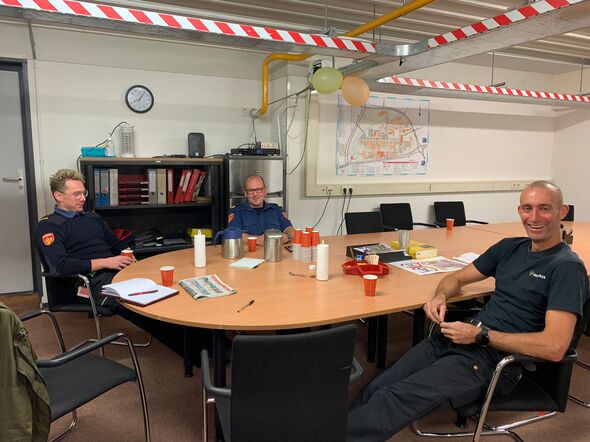
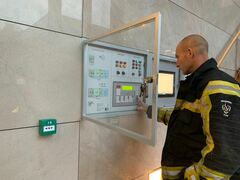
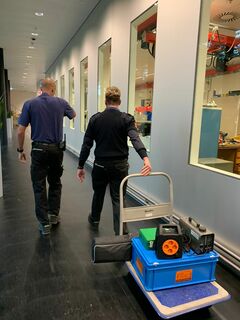
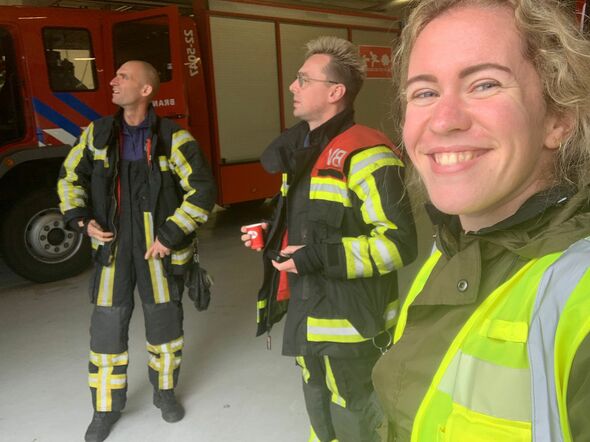
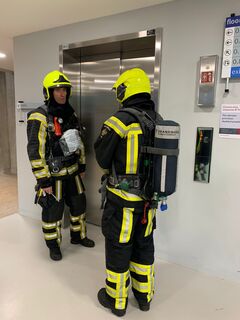
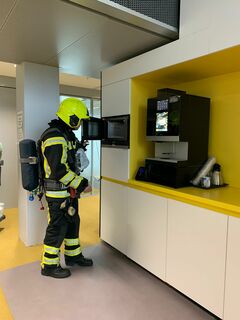
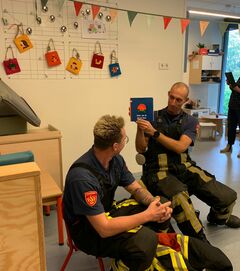
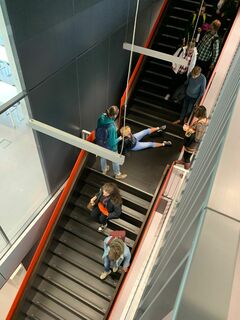
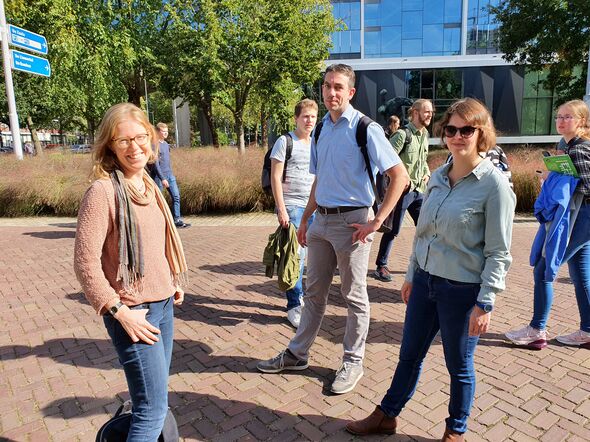
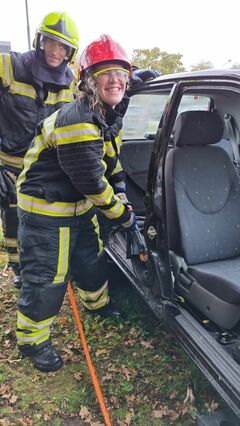
Discussion